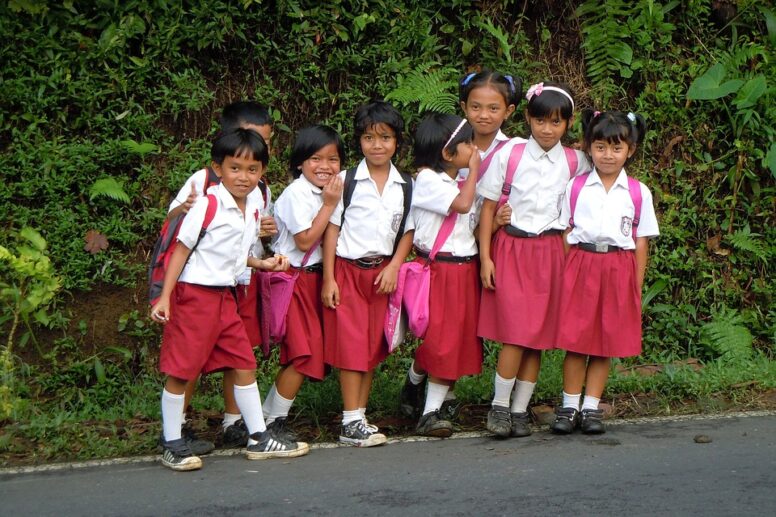Indonesian students are among the lowest performers in Southeast Asia, according to a recent report, The Program for International Student Assessment (PISA), published this month from the Organization for Economic Cooperation and Development (OECD). Indonesian 15-year-olds rated over 79 states in all 3 areas beneath consideration: math, reading, and mathematics. The results point to schooling quality issues in the most populous nation of the region.
“it is a wake-up telephone for each of us at the education industry,” explained Totok Amin Soefijanto, a policy specialist at Paramadina University in Jakarta.
Imperfect incentives
Indonesia’s so-called market volatility, meaning its large youth population within a state of over 260 million, holds significant potential for economic development, but it’s diminished by its own low educational achievement thus far.
Qualified teachers are an issue. The percentage of students stated their teachers provided them with responses. One in five instructors are absent, according to the World Bank at 2017. The government has conducted teacher proficiency tests and at 2015, the average score for its almost three million instructors who obtained it was 53 percent, based on an investigation by the University of Melbourne professor Andrew Rosser.
“We haven’t repeated the proficiency assessment since 2015, which I believe was one of our errors, since if we do not quantify this, we do not understand where their abilities are diminishing,” explained Soefijanto.
Salaries are faced by Indonesian teachers and are appointed on the grounds of favor-trading or even cronyism, based on Rosser, which reduces their proficiency.
Decentralization has been a different challenge for enhancing schooling. Beneath the regime of army Suharto from 1965 to 1998, the college system was highly concentrated. But following the regime ceded into a democracy, Jakarta yielded control of educational coverage. Given the geographical reach of the islands of Indonesia, this spread has made it challenging to apply things like teacher credentials or curricula.
“We also have challenges in regards to geographical inequities, as we’ve got a good deal of remote regions in the nation,” stated Jakarta-based social worker and activist Ryan Febrianto. “It is a huge country that has a lot of administrative locations, languages, and cultures, so what is important is to create policies that could adapt that.”
Some recent improvements
The OECD report notes that last year’s state results” has to be observed in the context of those huge strides that Indonesia has made in raising enrolment.” The PISA sample policy jumped to 85 percent of pupils from 46 percent. According to the report’s writers, when accounting to the weakness of fresh entrants to a college system, the simple fact that Indonesia’s outcomes have been relatively steady over this period really suggests that”Indonesia has managed to increase the standard of its education system”
Indonesia’s high-profile education minister, Nadiem Makarim, former CEO of this powerful ride-hailing startup Go-Jek, informed Indonesian paper Kompas the PISA results”shouldn’t be packed as great news” and called for a”paradigm shift” in educational criteria. He declared that the National Examination of the country will be revamped as a Minimum Competency Assessment that assesses students on literacy and mathematics abilities.
Terrible core subjects
Math was a particularly sore issue for black students, using just 1 percent of those performing at the greatest levels, compared to 44% in mainland China and 37% in Singapore, in line with this report. The World Bank has also promised that 55 percent of Indonesians who finish faculty are functionally illiterate.
FILE – A teacher clarifies verses of the Quran sprinkled on alloy plates in a recital course in the Al-Ashriyyah Nurul Iman boarding school in Parung, West Java, Indonesia during the fasting month of Ramadan,
Some resources are diverted into studies from subjects. Nearly two-thirds of the nation’s secondary schools are personal and nearly all (about 90 percent ) of these are Islamic in character. Pupils at religious boarding schools generally score lower than students at nonreligious schools on examinations, based on a 2017 study.
It might be well worth noting that Indonesia might not absence complete resources to finance education, but instead that its allocation warrants further inspection. The nation invested roughly 3.6 percentage of its GDP on education in 2015, marginally lower compared to regional neighbors such as Malaysia and Vietnam, but according to a constitutional mandate to invest 20 percent of its federal budget on instruction.
“In the last few decades, I believe that the government was focusing on preserving and enhancing enrollment levels in addition to improving school centers… but we [still] have problems concerning quality improvement,” explained Febrianto.
From incentivizing educators to fine-tuning its assessments that are national There’s far fruit for Indonesia’s education budget in the coming years. Meanwhile, there’s 1 area where undercover pupils already score high: 91 percent of these reported”sometimes or always feeling joyful,” a complete six points greater than the worldwide average.

